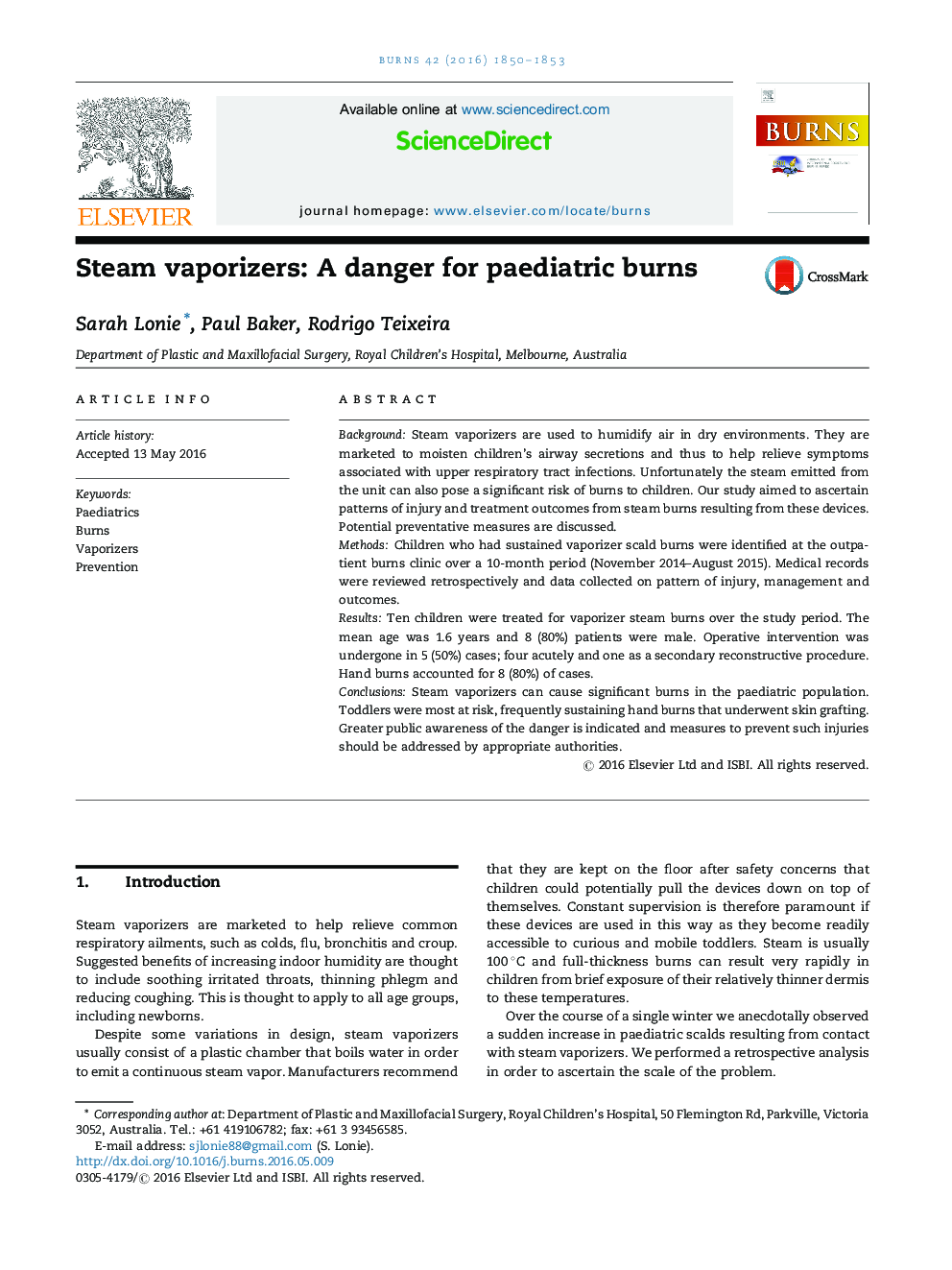| Article ID | Journal | Published Year | Pages | File Type |
|---|---|---|---|---|
| 5636211 | Burns | 2016 | 4 Pages |
â¢Ten children with vaporizer scald burns came to burn clinic over a 10-month period.â¢Surgery was undertaken in 50% of cases; 4 acutely and 1 reconstructive procedure.â¢Hand burns accounted for 80% of cases.â¢Toddlers were most at risk, with mostly hand burns that underwent skin grafting.â¢Greater public awareness to prevent vaporizer burns is indicated.
BackgroundSteam vaporizers are used to humidify air in dry environments. They are marketed to moisten children's airway secretions and thus to help relieve symptoms associated with upper respiratory tract infections. Unfortunately the steam emitted from the unit can also pose a significant risk of burns to children. Our study aimed to ascertain patterns of injury and treatment outcomes from steam burns resulting from these devices. Potential preventative measures are discussed.MethodsChildren who had sustained vaporizer scald burns were identified at the outpatient burns clinic over a 10-month period (November 2014-August 2015). Medical records were reviewed retrospectively and data collected on pattern of injury, management and outcomes.ResultsTen children were treated for vaporizer steam burns over the study period. The mean age was 1.6 years and 8 (80%) patients were male. Operative intervention was undergone in 5 (50%) cases; four acutely and one as a secondary reconstructive procedure. Hand burns accounted for 8 (80%) of cases.ConclusionsSteam vaporizers can cause significant burns in the paediatric population. Toddlers were most at risk, frequently sustaining hand burns that underwent skin grafting. Greater public awareness of the danger is indicated and measures to prevent such injuries should be addressed by appropriate authorities.
